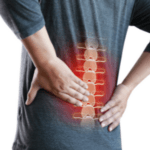By Neil Dyson, TÜV SÜD Product Service
Safety is one of the most significant issues facing machinery owners in Europe today, and the electrical element is an essential consideration for keeping machine operators and maintenance personnel safe.
In many cases, electricians responsible for maintaining machinery are being trained to British standard BS 7671 – ‘Requirements for Electrical Installations’. However, this is only applicable in the UK and applies to low voltage electrical installations, covering general wiring of buildings, but largely excludes machinery.
The standard that should be followed is EN 60204-1:2006 +A1:2009 – “Safety of machinery – Electrical equipment of machines”. Yet a great number of electricians and in-house maintenance personnel still seem unaware of its existence.
The standard is 130 pages long and contains 18 sections and nine annexes. This article will review a few key elements of this lengthy document.
Isolators
EN 60204 requires that all isolators should be lockable and attached to the machine and that they should be capable of disconnecting all electrical supplies. This means that if something should go wrong, harm to machinery operators through electric shock is minimised.
If this isn’t possible, circuits must satisfy further specific requirements, which are outlined in detail within the standard.
Enclosures
The standard also requires that electrically live parts be located inside enclosures, such as doors, lids or covers, to provide protection against direct human contact with them.
Any enclosures should only be able to be opened under one of three conditions:
- With a key or tool.
- Before the enclosure can be opened, live parts must be automatically disconnected.
- Opening of the enclosure should only be possible when all live parts are protected against direct contact.
Any large-scale enclosures, which allow a person to fully enter machinery such as palletisers, must also provide a means of escape, such as panic bolts on the inside of doors.
Colour-coding
Part 10 of EN 60204 covers colour coding and marking requirements for push-button actuators (an automatic mechanism for electrical shut-off). For example, the standard states that the colours for start/on actuators should be white, grey, black or green, with a preference for white. Under no circumstances should the colour red be used, as this is reserved for emergency stop and emergency switching-off actuators.
Also, unless otherwise agreed between the machine supplier and the user, machine status indicator lights must also be colour coded, with each colour identifying a specific status. For example, red highlighting an emergency, hazardous situation, while green indicates normal conditions.
Documentation
Section 17 of the standard outlines technical documentation requirements. This includes information relating to a machine’s electrical installation, operation, and maintenance. This can be in the form of drawings, diagrams, charts, tables, and instructions.
The standard also recognises that different levels of detail will be needed depending on the complexity of the machinery. However, there are requirements which are applicable to all documentation, no matter what the machine type. The standard states that all documentation:
- shall be in accordance with relevant parts of IEC 61082;
- reference designations shall be in accordance with relevant parts of IEC 61346;
- instructions/manuals shall be in accordance with IEC 62079;
- parts lists where provided shall be in accordance with IEC 62027, class B.
Navigating the maze
While EN 60204A requires only a self-declaration against the conformance process, its complexity, coupled with the potential lethal consequences if electrical safety is incorrectly administered, means that it is not a process that machinery owners can afford to get wrong.
Due to the complexity of the compliance process, best practice advice would be to work with an expert, either employed in-house or an outsourced supplier, who has the necessary in-depth knowledge of all the relevant regulatory requirements.
 Neil Dyson, Business Line Manager for Machinery Safety at TÜV SÜD Product Service, a global product testing, inspection and certification organisation.
Neil Dyson, Business Line Manager for Machinery Safety at TÜV SÜD Product Service, a global product testing, inspection and certification organisation.
Approaches to managing the risks associated Musculoskeletal disorders
In this episode of the Safety & Health Podcast, we hear from Matt Birtles, Principal Ergonomics Consultant at HSE’s Science and Research Centre, about the different approaches to managing the risks associated with Musculoskeletal disorders.
Matt, an ergonomics and human factors expert, shares his thoughts on why MSDs are important, the various prevalent rates across the UK, what you can do within your own organisation and the Risk Management process surrounding MSD’s.


